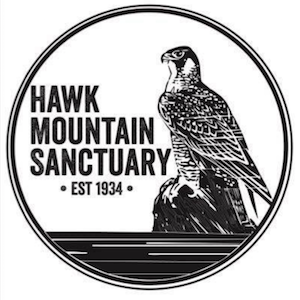Hanover Bald Eagle Blog # 31
In partnership with Pennsylvania Game Commission and Comcast Business .
It’s official: both Stars and Stripes have taken their first flights from the nest, and just as we will be celebrating independence this week, so will these two eaglets as they begin to gain experience and comfort with their newly accessible surroundings. Even though we have not witnessed their first exploratory hops, jumps, and flaps, outside of the nest, both eaglets are likely experimenting with landings and take-offs by moving from branch to branch, stump to stump. Recently fledged bald eagles like Stars and Stripes will use their nest as a home base while taking short flights to and from, and will continue to beg for food from their parents until Liberty and Freedom cut them off.
Stars and Stripes will develop their hunting skills on an individual basis, but like other social scavengers, observing others is an integral part of the learning process. Through a combination of watching Liberty and Freedom as well as their own trial-and-error, both eaglets will hopefully gain the skills necessary to successfully support themselves during their first and most perilous year of life. An eagle’s chance of survival increases each year, though during their first year, mortality rates are high at over 50%.
Learning to hunt is not just about knowing what to eat and how to catch it. Flight coordination is an important prerequisite for successful hunting, and while many juvenile eagles rely most heavily on carcasses in their first months of independence, attacking prey will become necessary. For Pennsylvanian bald eagles, year-round resources are not a guarantee. Many eagles depart during the winter time, flying south to open water or to avoid snow-covered ground, and even though juveniles may discover carcasses, landfills, butcher scraps, or other communal feeding sites, eventually accurate fishing skills come in handy (and good fishing requires adequate flight skills). This being said, eagles are surprisingly efficient runners, and juveniles likely utilize a combination of clumsy flight, ground maneuvering, and jumping during initial foraging bouts.
As Liberty and Freedom provision less and less for Stars and Stripes, they will simultaneously hone their hunting skills in part by harassing their parents and stealing food from them when possible. This is a natural “adolescent” behavior that, while undoubtedly annoying for Liberty and Freedom, counts as experiential learning. Mantling (the guarding often performed when a hungry eagle has the chance to feed around other eagles and wants to increase its likelihood of getting enough), social aggression, and craftiness are all behavioral adaptations that allow eagles to excel within a variety of environmental circumstances. These skills are better tested on parents before strangers.
Begging calls, which not only alert parents to the location of their offspring, but also inform them of the begging eaglet’s nutritional status, will become less frequent as the juveniles become more capable of providing for themselves. This period, called the Postfledging dependence period usually takes between four to twelve weeks, with males tending to disperse and develop faster than females.
Around 17-23 weeks of age, the relationship between eaglets and parents begins to weaken, and eventually each will go their own way, though there is evidence that siblings may remain near each other for some time. The dispersal process may be gradual, prompted in part by wandering bouts as the eaglets explore areas outsid
In the coming week, we may see less frequent visits to the nest by both adults and juveniles, though home-cooked meals will likely be the preferred method of feeding for Stars and Stripes until they become more coordinated. As we spend time with our families for the holiday, perhaps we can take a moment to congratulate Stars and Stripes on their first flights, and wish them well as they embark on a year filled with mistakes and achievements alike!
CALENDAR CATCH-UP:
Stars hatched on April 4th, first fledged on June 18th, with a total of 76 days in the nest
Stripes hatched on April 6th , first fledged on June 30th, with a total of 85 days in the nest
SOURCES
Ellis, David H. (1979). Development of Behavior in the Golden Eagle. Wildlife Monographs, 70, 394-486).
O’Toole. Laura, T. et. al. (1999). Postfledging Behavior of Golden Eagles. The Wilson Bulletin, 111(4), 472-477.
THANK YOU HAWK MOUNTAIN FOR THIS WEEK'S BLOG ENTRY!

RETURN TO HANOVER BALD EAGLE BLOGS
WATCH THE HANOVER BALD EAGLE LIVE CAMS
For over 20 years, HDOnTap has provided live streaming solutions to resorts, amusement parks, wildlife refuges and more. In addition to maintaining a network of over 400 live webcams, HDOnTap specializes in design and installation of remote, off-grid and otherwise challenging live streaming solutions. Contact press@hdontap.com for all media needs, including images and recordings.